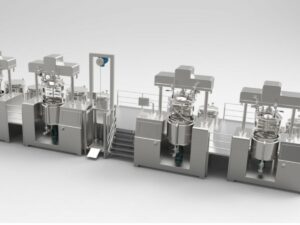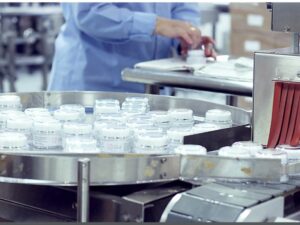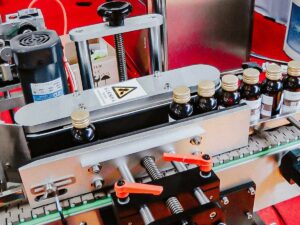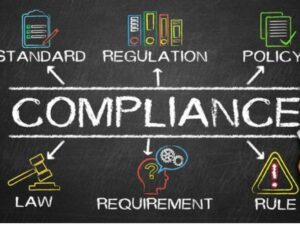Ever wondered about the journey behind skincare essentials? From raw ingredients to the final product, a meticulous process ensures quality. As an active participant in the industry, understanding these steps is vital for delivering top-tier skincare solutions.
Drawing from experience, and addressing the challenge, we will unveil through this guide the 9 pivotal stages of the skincare manufacturing process, offering insights into each phase, beginning with the research and development phase, sourcing high-quality ingredients into the formulation process, merging science and art, and ensuring remarkable results. Safety and stability testing guarantees consistency, and so on.
Embark on this journey as we decode the skincare manufacturing process together, empowering every skincare venture. Explore each step and read on!
1. Research & Development (R&D) Phase
In the realm of skincare and beauty product manufacturing, the Research & Development (R&D) phase stands as a cornerstone. It’s here that ideas transform into innovations, and concepts modify into market-ready solutions. This phase ensures products not only resonate with market demand but also maintain the highest standards of quality and efficacy. Here’s an overview to know more:
Conceptualization and Idea Generation
Every groundbreaking product begins with a spark of creativity. Zeralabs understands that in the ever-evolving beauty industry, new ideas and innovative concepts are the driving forces behind memorable products. Trend analysis, market gap identification, and consumer preferences are key components guiding this initial phase. Ideas take shape. The research aligns with market demands. Only then can truly impactful products be born.
Exploration and Prototyping
Once a concept is solidified, the real scientific exploration begins. Prototypes are developed, revised, and tested multiple times to achieve the desired outcome. Advanced laboratories employ sophisticated tools for this meticulous process. Formulas evolve. Testing parameters are set. It’s here that a concept begins its transformation into a tangible product.
Feasibility and Market Impact Study
Even the most groundbreaking products need market validation. Through comprehensive studies, the potential success and market impact of a new product are gauged. Insights are gathered from industry experts, past trends, and predictive analytics. Analysis drives decisions. Potential barriers are identified. Successful launches rely heavily on understanding market readiness.

2. Sourcing of Ingredients
Before any product touches the skin, there’s a strategic journey of ingredient selection. Sourcing the right ingredients is paramount, as they are the heartbeat of any skincare formula. Beauty manufacturers must delve deep into global networks to ensure optimal quality and effectiveness. Here’s what to remember:
Navigating Global Supplier
For every beauty skincare manufacturer, establishing connections with a vast array of suppliers is crucial. These relationships ensure access to a diverse pool of quality ingredients. Trusted networks enable swift ingredient sourcing, minimizing delays in product formulation.
Diverse suppliers mean a wealth of options. This selection richness aids in achieving the perfect formulation. From my standpoint, it’s important to choose the best colors for a masterpiece.
Sustainability and Ethical Sourcing
In today’s world, sustainability is more than just a buzzword; it’s a responsibility. Ethical sourcing embodies the commitment to environmental conservation and fair labor practices. By choosing suppliers who uphold these values, beauty manufacturers contribute to a sustainable beauty industry.
Less harm, more beauty. Sustainable ingredients often have a richer profile. In many instances, products developed from ethically sourced ingredients have a unique selling proposition.
Consistent Ingredient Quality
Consistency is the hallmark of trust in skincare. Every batch of ingredients must meet rigorous standards to ensure product efficacy. It’s not just about sourcing; it’s about sourcing the best every time. A singular compromise can dent a product’s reputation. Regular audits keep suppliers on their toes. And in many discussions, quality assurance is a non-negotiable topic.

3. Formulation Process
Crafting the perfect skincare product isn’t just about blending ingredients; it’s an art supported by science. Here’s a basic step-by-step formulation process followed by every leading beauty skincare manufacturer:

Step#1 Ingredient Analysis
Every beauty product begins its journey with an in-depth ingredient analysis. This stage is about understanding the chemical composition, potential interactions, and efficacy of each ingredient. The goal is to ensure that each component complements the other, leading to a harmonious formula. Comprehensive documentation is vital.
Step#2 Blend & Emulsify
Once ingredients are analyzed, the blending phase commences. This is where the magic truly begins. Different ingredients, each with its own unique property, are mixed together to form a cohesive formula. Precision is key. Advanced machinery ensures uniform blending without air bubbles or inconsistencies. Interestingly, the art of combining can be likened to a chef perfecting a dish’s texture.
Step#3 pH Level Adjustment
The skin’s natural pH level is slightly acidic, hovering between 5.4 and 5.9. Thus, adjusting a product’s pH is crucial to ensure it’s compatible with the skin and maintains its beneficial properties. Specialized equipment accurately measures and adjusts this balance. Buffering agents might be introduced. From a scientific standpoint, pH balance plays a vital role in product performance.
Step#4 Preservation
Any skincare product needs longevity, not just in terms of efficacy but also in preventing microbial growth. Preservatives ensure products remain safe and effective over time. This step isn’t just about adding agents; it’s about ensuring they don’t negatively interact with other ingredients. Selection is crucial. Minimalistic, yet effective preservative systems are often preferred.
| Preservation Aspect |
Description |
Advantages |
Disadvantages |
| Natural Preservatives |
Preservatives derived from natural sources (e.g., rosemary extract, grapefruit seed extract). |
Appeals to eco-conscious consumers. Perceived as safer and gentler on skin |
Shorter shelf life compared to synthetics. Potentially less effective against a broad spectrum of microbes |
| Synthetic Preservatives |
Chemically-derived preservatives (e.g., parabens, formaldehyde-releasers). |
Longer shelf life. Broad-spectrum microbial protection |
Potential skin irritants. May not appeal to “clean beauty” consumers |
| Broad Spectrum Preservatives |
Preservatives effective against a wide range of microbes (bacteria, fungi, and yeasts). |
Comprehensive protection. Reduces risk of product contamination |
Might be more potent, raising concerns about skin sensitivity |
| pH Adjusters |
Ingredients that maintain or adjust the pH of the product (e.g., citric acid). pH can influence preservative efficacy. |
Ensures product stability. Can optimize preservative effectiveness |
Adjusting pH can affect product feel and effectiveness |
| Packaging and Dispensing |
Use of air-tight or pump dispensers to reduce contamination. |
Reduces exposure to contaminants. Prolongs product life by minimizing exposure to air and moisture |
Potential higher packaging costs. Limited design options |
| Hurdle Technology |
Using multiple strategies (e.g., low water content, high salt) to create an environment unsuitable for microbial growth. |
Reduces reliance on strong preservatives. Enhances overall product stability |
Complexity in formulation Might affect product aesthetics or feel |
| Testing and Validation |
Regularly testing the product to validate preservative efficacy over time. |
Ensures consistent product safety. Validates shelf life claims |
Added costs for consistent testing. Delays in product release if formulations need adjustments |
Step#5 Final Testing
After all the formulation steps, a round of rigorous testing is paramount. This isn’t just about product efficacy but ensuring safety, stability, and adherence to claims. Both in-house and third-party evaluations might be conducted. Different environments and conditions are simulated. Only upon clearing these stringent tests does a product get the green light for production.
4. Safety and Stability Testing
According to Cosmedesk, in the world of cosmetics, ensuring the quality and safety of the products is of the greatest importance, and, therefore, strict regulations and guidelines have been established with a view to guarantee a high level of protection of human health. That is why it’s essential to remember the following:

Rigorous Testing Protocols
A beauty skin care manufacturer like Zeralabs never leaves product safety to chance. Comprehensive tests are performed to check for adverse reactions, irritations, and allergens. It’s a multi-stage process: from patch tests to long-term stability checks. Testing offers peace of mind. Only the best products clear these hurdles. From my observations, this rigorousness is what builds brand trust.
Preserving Product Integrity over Time
Product integrity isn’t just about initial impressions but ensuring a consistent experience with every use. Detailed evaluations determine how formulas respond to varied temperatures, humidity, and time. Preventing separation or degradation is vital. Factors like oxidation are monitored. For example, a face serum’s efficacy can wane if exposed to light or air frequently. Robust packaging becomes an ally in this preservation journey.
Regulatory Compliance and Client Confidence
Navigating the maze of global skincare regulations requires expertise. Every country has its own set of standards and protocols. Adherence is not just a legal requisite but a commitment to client well-being. Compliance builds confidence. Those top-tier manufacturers always remain updated on these standards. Interestingly, regulatory benchmarks are often viewed as a testament to product quality, even in the realm of cleaning products.
5. Scaling for Mass Production
Transitioning from a lab sample to mass production is a monumental task. It’s not just about multiplying the quantity; it’s about ensuring that the large-scale product mirrors the quality and effectiveness of that original sample. Here are the vital aspects to remember:
Consistency Amidst Volume
Scaling up doesn’t mean scaling down on quality. Advanced equipment ensures consistent mixing, filling, and sealing. Automation plays a pivotal role here. Yet, human oversight ensures no machine errors creep in. In many instances, the beauty of technology and human expertise combined produce impeccable results.
Production Efficiency
Efficiency is the backbone of meeting market demand on time. Streamlined processes, from ingredient mixing to final packaging, ensure timely production. It’s a synchronized dance of machines and manpower. Wastage is minimized. Speed is optimized, but never at quality’s expense. Interestingly, the optimization journey often unveils innovative production techniques.
Formula Integrity in Bulk
Producing in bulk introduces new challenges. Large batches must maintain the same integrity as smaller ones. Temperature-controlled storage, meticulous quality checks, and regular equipment calibration become vital. The production floor’s mantra is simple: quality, consistency, and care. For example, even in bulk, a moisturizing cream should offer the same hydration level from the first to the last tub produced.

6. Quality Control and Assurance
Beyond production, ensuring each product meets the desired standard is imperative. This phase is a continuous cycle of testing, retesting, and ensuring that every product aligns with the brand’s promise. Here’s what to keep in mind:
Aligning Packaging with Brand Identity
A product’s exterior often mirrors its interior quality. Packaging isn’t just a protective shell; it embodies the brand’s ethos. From color palettes to material choices, every detail gets scrutinized. Durable materials prevent external contaminations. Design aesthetics appeal to the target market. Based on my experience, packaging often serves as the first touchpoint for brand engagement.
Practicality and Sustainability Goals
In the age of eco-conscious clients, sustainability isn’t just an option—it’s a priority. But achieving this without compromising practicality is a fine balance. Biodegradable materials, reusable containers, and minimalist designs come to the fore. Lighter packaging reduces transportation emissions. Interestingly, a pivot to eco-friendly options can significantly bolster brand reputation without denting functionality.
Accurate and Compliant Labeling
Labels are more than just design elements; they’re informational hubs. Every ingredient, usage direction, and cautionary note must be clearly mentioned. Clarity avoids client confusion. Compliance ensures regulatory adherence. In many discussions, transparent labeling is equated with brand honesty.

7. Packaging and Labeling
The final presentation of a product is as vital as its contents. Packaging and labeling serve as the gateway to partnership trust, ensuring clarity, compliance, and aesthetics are harmonized. Take note of these important factors:
Component Restrictions and Approvals
Globally, certain ingredients might be restricted or require special mention. Staying abreast of these regulations ensures smooth market entries. Ingredient transparency isn’t just about compliance but consumer safety. Frequent updates, collaborations with regulatory bodies, and proactive approaches minimize disruptions. From my observations, this proactive approach is what sets manufacturers apart.
Transparency in Formulations
Clear, accurate ingredient listings are paramount. People today are more knowledgeable, often researching ingredients and their benefits. Transparency fosters trust. Comprehensive details discourage misinformation. For example, a product boasting of “natural ingredients” should clearly delineate what these are and their proportions.
Design and Brand Representation
Packaging serves as a product’s visual ambassador. It’s not just about aesthetics, but how effectively it represents the brand’s ethos and values. Every hue, texture, and design element is chosen with purpose. Decisions echo brand narratives. Material choices matter.

8. Regulatory Compliance
As the beauty industry expands globally, navigating the intricacies of regional regulations is paramount. This ensures products are not just effective but also safe for global markets. So keep these key points in mind:
International Cosmetic Standards
Every country or region has unique benchmarks for cosmetics. From ingredient restrictions to labeling norms, understanding these nuances is vital. Staying compliant ensures smooth market access. Regular training and updates keep teams in the know. Collaborative efforts with local regulatory bodies optimize product acceptance. Interestingly, such compliance often paves the way for industry-wide best practices.
Restrictions and Approvals
As mentioned, the global landscape of ingredient approval is intricate. Some ingredients celebrated in one region might be restricted in another. Swift adaptations to these norms prevent market entry hiccups. Constant research keeps formulations ahead of the curve. In several instances, these adaptations lead to even more innovative product formulations.
Transparency in Formulations
With consumers demanding clarity, product transparency isn’t optional. Detailed ingredient listings, benefits, and potential allergens need clear mentions. Digital platforms can offer deeper dives into product compositions. QR codes might link to detailed ingredient breakdowns. In discussions, the demand for transparency often ranks top in clients’ expectations.

9. Distribution and Storage
Once a product is ready, its journey to the end clients needs careful planning. Efficient distribution coupled with optimal storage conditions ensures the product remains as intended till it reaches the clients’ hands. With that, don’t forget these significant points:
Efficient Supply Chain Strategies
Efficiency in distribution cuts down lead times. Collaborations with trusted logistics partners, real-time tracking, and streamlined warehousing play pivotal roles. Reducing transit times ensures product freshness. Strategic warehousing minimizes transportation costs. For instance, central distribution hubs in key markets can drastically reduce delivery times.
Storage Conditions for Product Integrity
Storage isn’t just about space—it’s about maintaining product quality. Temperature-controlled environments, humidity checks, and minimal light exposure become vital, especially for sensitive products. Regular audits maintain storage standards. Digital tools monitor real-time conditions. Interestingly, optimized storage often extends the effective life of products beyond expectations.
Managing Shelf Life and Batch Traceability
Every product has an optimal shelf life. Ensuring products within this window reach clients requires efficient batch management. Advanced tracking systems ensure older batches are dispatched first. Batch traceability aids in swift recall if ever needed. From my point of view, this efficiency ensures clients always get the best of what brands offer.

Conclusion
Within this comprehensive guide, we journeyed through the intricate 9 Key Steps in the Skincare Manufacturing Process. From initial research and development to the final nuances of distribution and storage, every phase was meticulously unpacked. Are you one of the businesses that wants to effectively navigate these multifaceted processes?
When clarity is sought or questions arise, do not hesitate to reach out to us. Zeralabs, a renowned name in the industry, consistently showcases excellence in skincare and beauty product manufacturing. Engage with our team of experts to discover more about these complex challenges. For in-depth insights or collaborative opportunities, contact us; together, we can craft exceptional skincare solutions.









